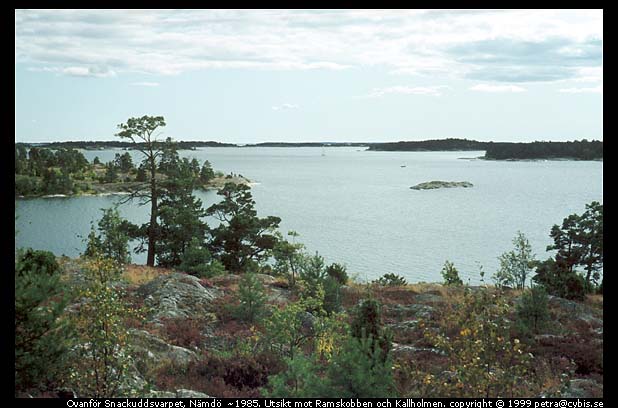 |
All this land was pressed down during the last glacial period. When at last the ice melted the scraped
off ground slowly raised. Here, outside Stockholm, it is still raising about half a meter per 100 years.
As the bed-rock is very hard these coasts are not swept away by heavy sea waves. Because of that
we have all these islands.
Here we are standing near the east point of Nämdö looking to the south with the
open Baltic Sea at the horizon. Most islands outside Nämdö are still (!) quite low.
|
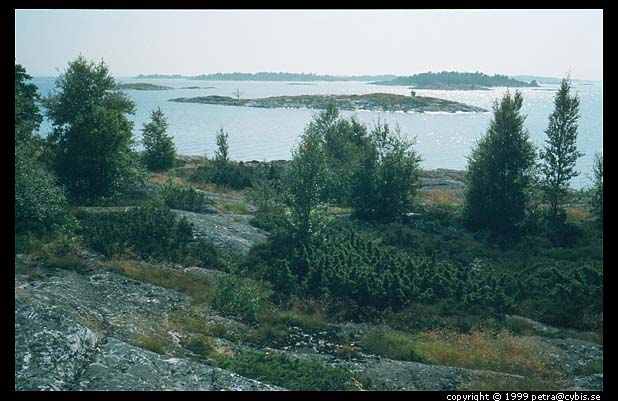 |
|
There are two bands of islands outside Nämdö. This is at the outer part of the first band. The
trees and bushes are birch and alder trees and low creeping juniper.
On the larger and higher islands in this first band you can also find low pinewood forests.
|
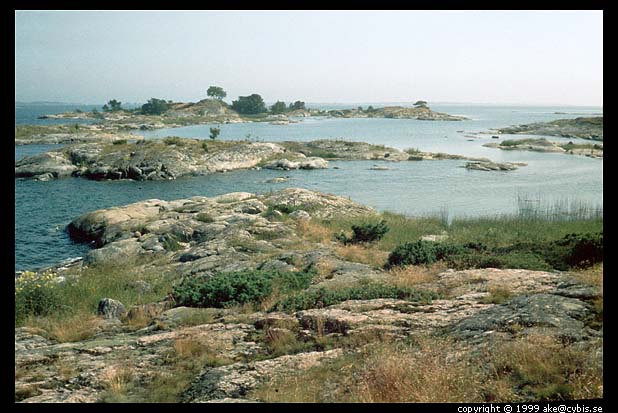 |
|
With some difficulty we can see the next and outermost band of islands in the haze at the horizon.
|
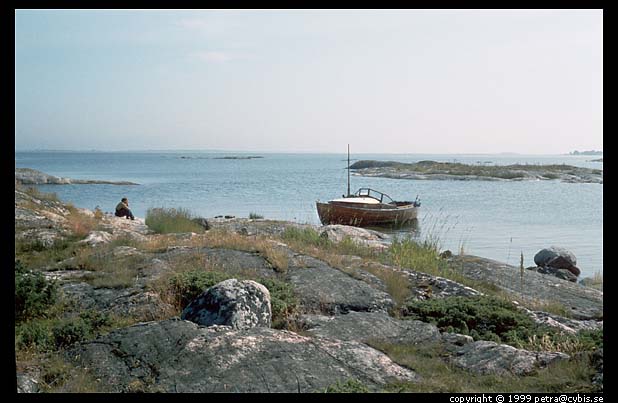 |
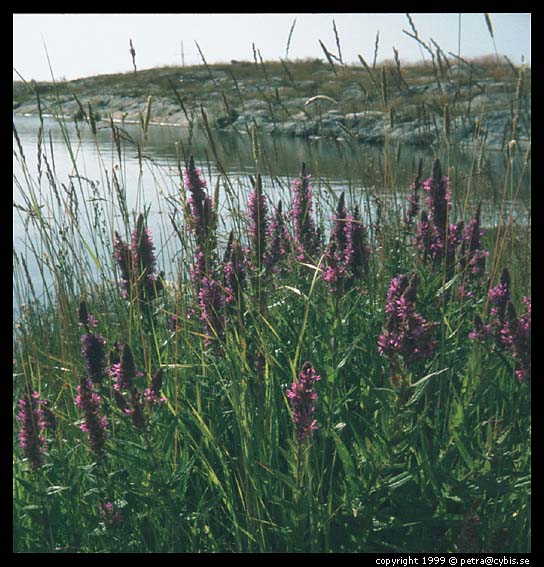 |
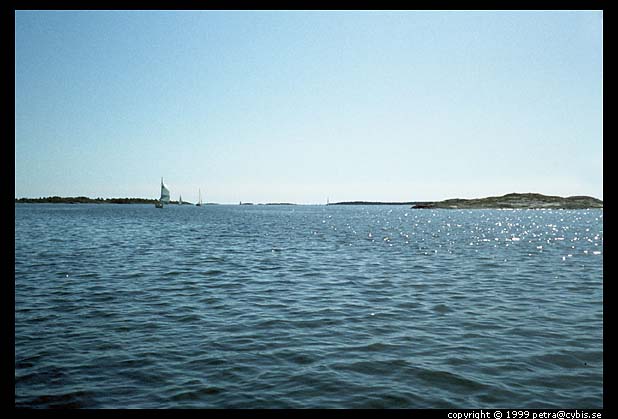 |
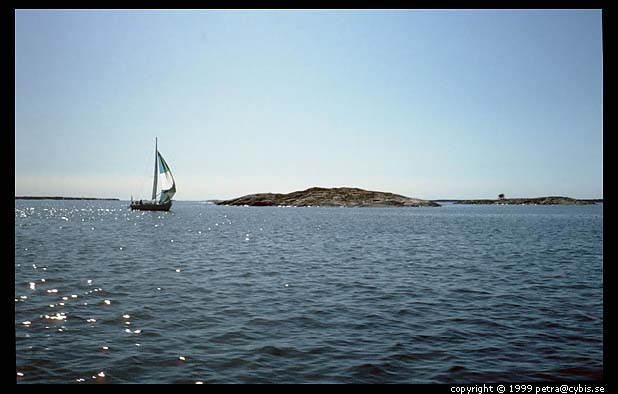 |
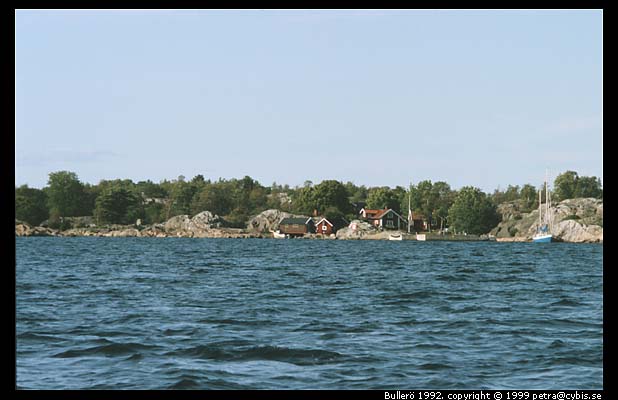 |
This is Bullerö, one of the larger islands in the second band of islands outside Nämdö.
There is in fact a third band outside Bullerö, but most of the islands belonging to that band are
still submerged... So Bullerö is at the frontier of the open Baltic Sea.
Bullerö was former a small village where a few families earned their living on fishing, farming
and seal-hunting. The farming was more a matter of making some cows survive to get milk for the needs of
the family. - Today Bullerö is administered by "Skärgårdsstiftelsen".
|
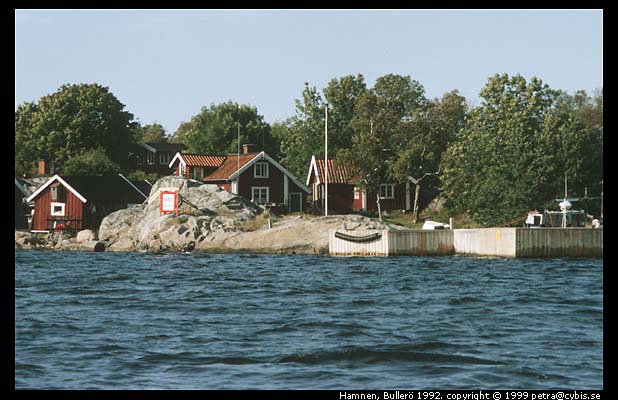 |
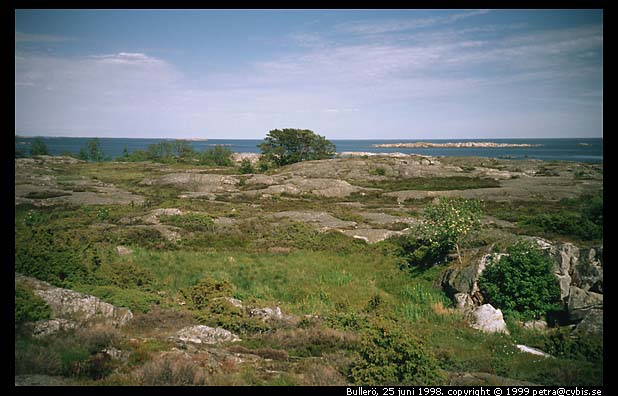 |
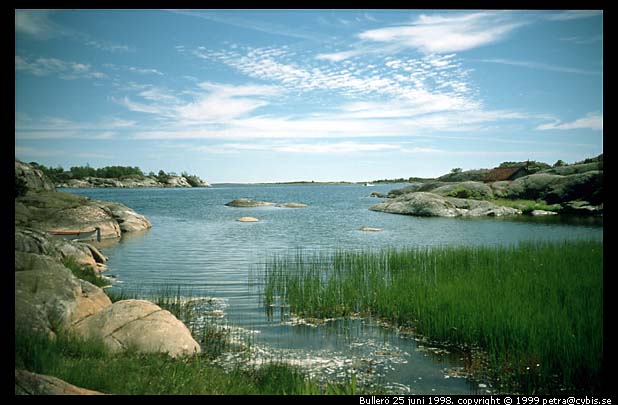 |
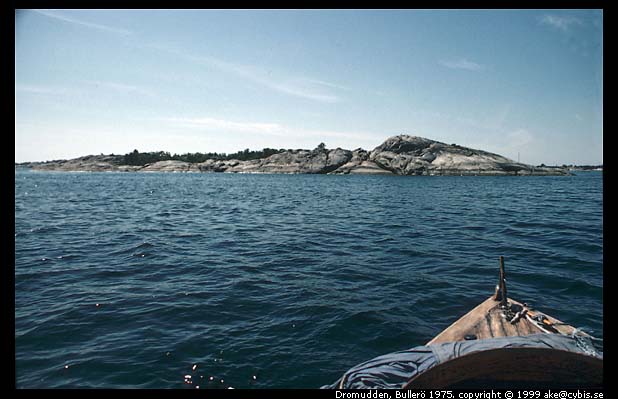 |
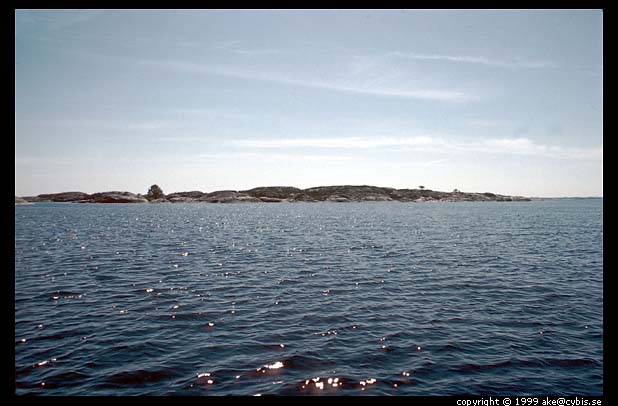 |
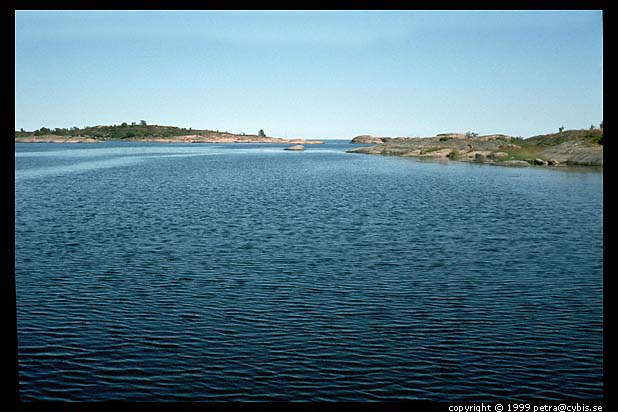 |
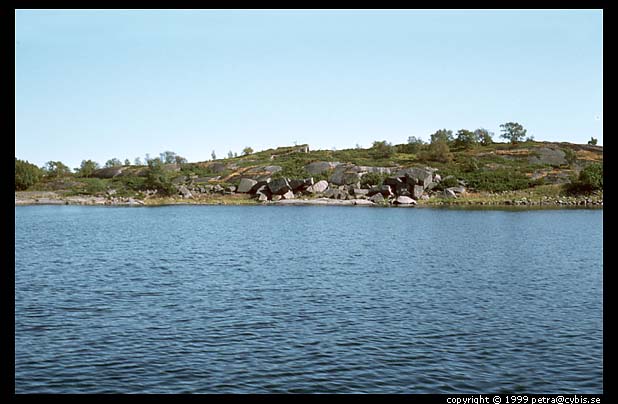 |
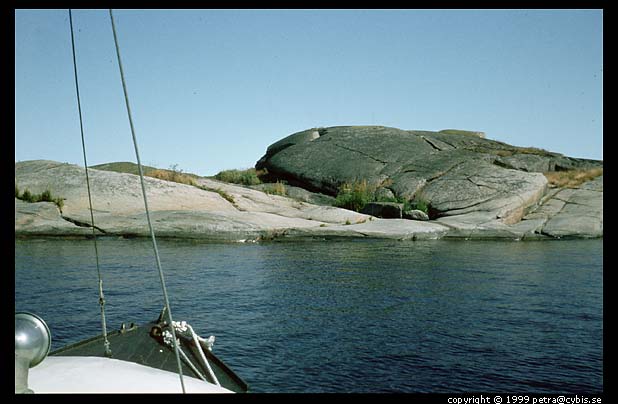 |
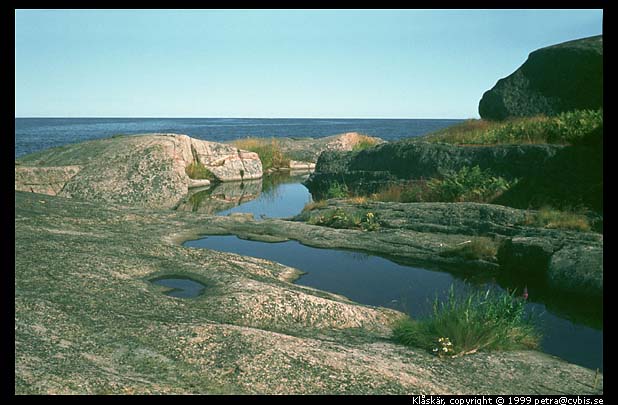 |
|
The Baltic Sea in sunny weather in the summer.
|
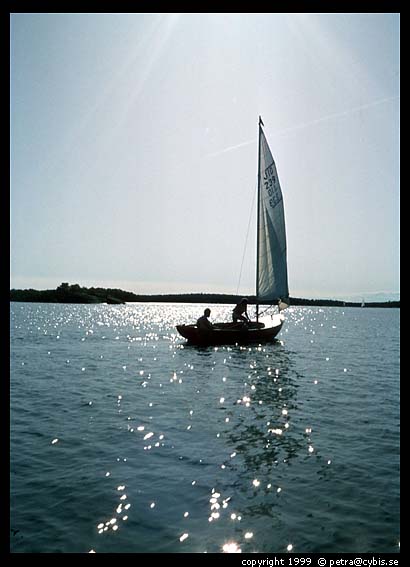 |
|
Warmth, play of sunlight, a lazy day...
|
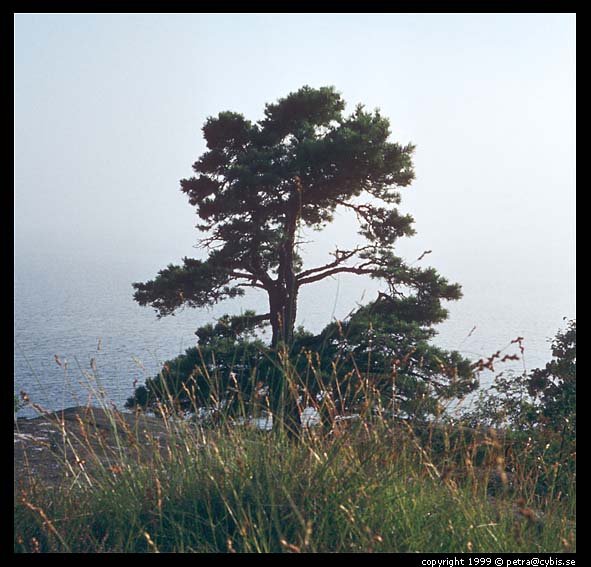 |
|
Today it is misty. But it can also rain here... Those other pictures are very
representative for sunny days with little or no wind! Those days we would like to preserve in a can
so that we could enjoy it in the winter.
|
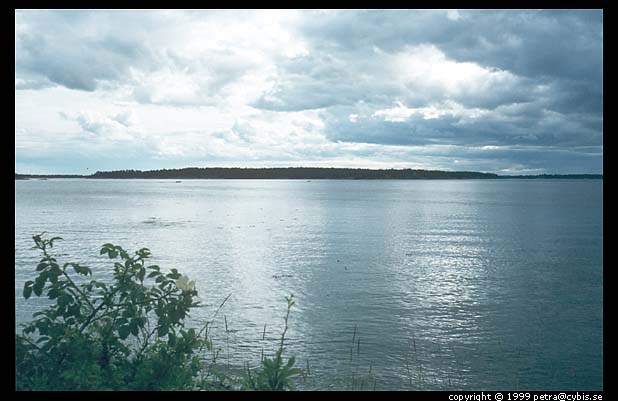 |
|
Back at Nämdö again.
|



















